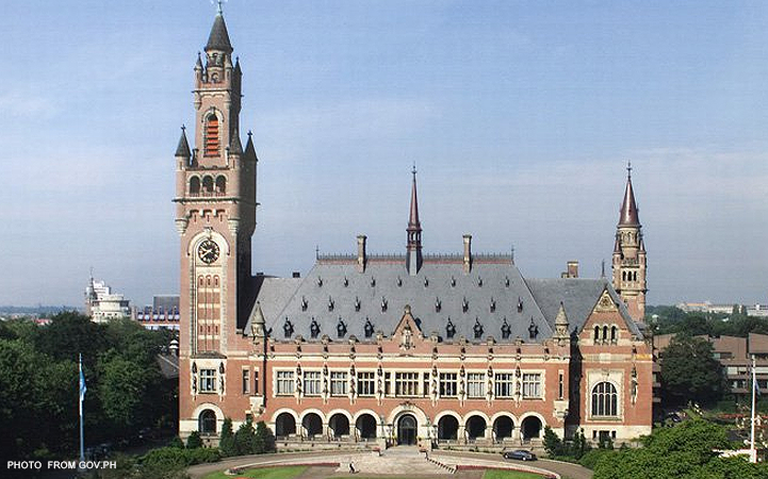
The Philippines relies on aging helicopters such as this UH-1 Huey seen on a recent mission in Mindanao. PHOTO: TREFOR MOSS/THE WALL STREET JOURNAL
Philippine Military Upgrade Stalls
Delay for $1 billion in defense deals leaves planned overhaul years from completion
MANILA—A push by the Philippines to overhaul its obsolete military has ground to a halt just as the U.S. ally is striving to deter China in the disputed waters between them.
A string of programs collectively valued at $1 billion stalled early last year, said military officials and executives involved in Philippine defense deals. The delay underscores how the government’s efforts to transform the country’s derelict navy and air force have become mired in red tape, funding problems and corruption allegations.
The delays leave long-held plans to build a “minimum credible deterrent”—comprising small but capable air and naval fleets—at least a decade from completion, said Jose Antonio Custodio, a Manila-based defense consultant. Even with a basic deterrent in place today, Manila would likely still lack the means to check Beijing’s assertiveness.
“We’re still at square one,” said Mr. Custodio. “With China building all these new bases [in the South China Sea], I’d say it’s already too late.”
Securing secondhand equipment from allies such as Japan and the U.S. may now be the Philippines’ only chance of quickly upgrading its forces, people familiar with the country’s procurement process said. The approach of presidential elections in May make it unlikely that any big contracts will be signed before then.

President Benigno Aquino III has promised to rejuvenate the military, which has been degraded by decades of underinvestment.
A pledge to spend $1.7 billion on new equipment initially bore fruit, as the administration signed a flurry of defense contracts valued at $834 million in late 2013 and early 2014, including deals for 12 Korean fighter jets, three Airbus transport planes and a new fleet of combat helicopters from Canada and the U.K.
“The record will show that the Aquino administration has stepped up the pace of [military modernization] considerably, surpassing the procurement program undertaken by three previous administrations combined,” said presidential spokesman Herminio Coloma.
However, Mr. Coloma said Mr. Aquino still hasn’t signed a law passed by the Philippines Congress in February 2013 earmarking $2 billion for defense procurement. Mr. Coloma didn’t explain the delay.
Government finances have been stretched thin after the government spent billions on reconstruction following Supertyphoon Haiyan (Yolanda) in 2013. Spending has also slowed after a recent scandal in which prosecutors charged three senators with corruption for their alleged involvement in the use of dummy NGOs to steal around $220 million in public money. All three senators denied the charges. Strict government procurement rules have been further tightened since then, putting the brakes on a range of spending programs.

The Philippine vessel Ramon Alcaraz participated in bilateral maritime exercise with the U.S. in June last year.PHOTO: AFP/GETTY IMAGES
Contracts for two naval frigates valued at $398 million and for two long-range patrol planes valued at $132 million—capabilities that would help the Philippines monitor its maritime territory, where it has overlapping claims with China—are among those that were scheduled to have been bid out last year but haven’t moved ahead. “It’s a bureaucratic logjam,” said Mr. Custodio.
Foreign defense companies seeking to supply these and other systems can only wait for the logjam to clear.
“It seems that all programs are paralyzed,” said a Western defense executive whose company is involved in one stalled project.
Another Western executive said the Philippines was hardly unique in experiencing lengthy holdups for military equipment, but recalled how the country’s defense leadership had built momentum in 2013, only to hit the buffers in early 2014.
“Defense officials just don’t have the authority to make things happen now,” he said.
The Philippine Department of National Defense and the Armed Forces of the Philippines didn’t respond to requests to comment.
With China accelerating its island-building program in the South China Sea, Philippine military chief Gen. Gregorio Pio Catapang recently urged Manila to spend more on defense as the country’s economy enjoys healthy growth. Last year’s defense budget was just $3.3 billion—far less than neighboring Singapore’s $9.5 billion.
A Philippines senate inquiry into the country’s military modernization efforts has meanwhile questioned the effectiveness of the funds spent so far, with one senator arguing there was practically nothing to show for the $1.4 billion spent on new weaponry in the decade to 2013.
Senators also looked into a deal for 21 secondhand helicopters, which the defense department canceled in April after only seven deliveries amid concerns about the quality of the technology, and with a Philippine tax official claiming that the aircraft had been ordered in exchange for kickbacks.
The defense department has denied the allegations.
The breakdown of the helicopter program has made defense officials even more reluctant to place new orders and expose themselves to further scrutiny, said Mr. Custodio.
Mr. Aquino has turned to allies for help. On a recent state visit to Japan, he requested secondhand P-3C Orion maritime patrol aircraft, having already received a $183 million loan from Tokyo to fund the construction of 10 new patrol boats. Tokyo has said it is considering the requests, though it hasn’t committed to anything specific. Australia, South Korea and the U.S. have all donated used military kit to Manila in recent years and have signaled a willingness to do more.
But hand-me-downs won’t deliver a deterrent capable of influencing decision makers in Beijing, Mr. Custodio says. “The Chinese are building islands on our doorstep.” - THE WALL STREET JOURNAL: Write to Trefor Moss at trefor.moss@wsj.com




















 Mactan-Cebu touted to be first of several world-class airports
Mactan-Cebu touted to be first of several world-class airports
















